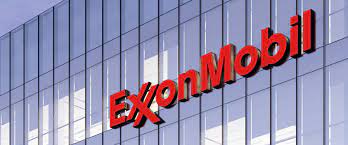ExxonMobil’s purchase of Pioneer Natural Resources is the largest upstream deal, in nominal terms, since Shell acquired BG for $82 billion in 2015 and makes ExxonMobil the world’s first megamajor.
That’s according to Wood Mackenzie’s Senior Vice President of Corporate Research, Tom Ellacott, who added, in a statement sent to Rigzone, that “the company will now be in a peer group of one”.
In the statement, Wood Mackenzie noted that, with its deal, Exxon gains over 700,000 barrels of oil equivalent of Midland Basin production, adds $5 billion of annual free cash flow, establishes a Permian resource base of over 16 billion barrels of oil equivalent, and creates the world’s largest tight oil player, “leapfrogging the leadership Chevron gained when it added PDC”.
Wood Mackenzie highlighted in its statement that, based on its analysis, Pioneer’s upstream operating cash margins over the next five years are 20 percent higher than ExxonMobil’s global upstream average.
“Wells payback in less than 24 months, driving stellar returns and some of the lowest breakevens in the sector,” Wood Mackenzie said in the statement.
“Pioneer’s Scope 1 and 2 emissions intensity is also 75 percent lower than ExxonMobil’s global upstream average over the next five years, according to Wood Mackenzie’s Emissions Benchmarking Tool,” the company added.
“ExxonMobil estimates the acquisition will increase its exposure to short-cycle barrels from 28 percent to over 40 percent. This step-change in flexibility will help the company manage future volatility in what’s sure to be a bumpy ride through the energy transition,” it continued.
“Domestic, short payback assets are also one of the best tools to manage heightened geopolitical risk,” Wood Mackenzie went on to state.
Wood Mackenzie also noted in the statement that, assuming a January 1, 2024, deal close, it estimates that the Permian basin will account for about approximately 37 percent of ExxonMobil’s upstream operating cash flow next year.
“That is higher than Chevron (28 percent) and only a bit below ConocoPhillips (41 percent),” Wood Mackenzie noted.
“ExxonMobil had one of the most diversified upstream profiles prior to the deal,” Rob Clarke, Wood Mackenzie’s Vice President of Upstream Research, said in the statement.
“With this acquisition, the company’s asset-level upstream operating cash flow concentration exceeds Chevron’s,” he added.
“But the scale of the company’s other businesses across the value chain (midstream, refining, marketing, petrochemicals, low carbon) provide substantial diversification ballast, which differentiates it from its U.S. peer,” Clarke continued.
In the statement, Clarke said ExxonMobil favors peer-leading scale in important basins and added that with this move, the company “locks-up a dominant position in the Permian with more than 1.4 million mostly contiguous acres and associated infrastructure”.
“The blocky leases will be the size other shale players can only dream of,” Clarke said.
The Wood Mackenzie VP highlighted in the statement that Exxon’s latest deal has implications for both the shale sector and the majors.
“U.S. Independents will face some big strategic decisions,” Clarke said.
“Selling out is one way of solving the portfolio challenges the US Independents face. And if the leader of the pack decides to sell up rather than consolidate, what does that mean for other players with weaker portfolios and market ratings,” he added.
Ellacott noted in the statement that “Chevron and ConocoPhillips may respond, for the right price”.
“But the euro majors have much less room to manoeuvre due to discounted equity and stakeholder pressure to decarbonize. BP could be a wildcard, with BPX’s refreshed growth strategy part of BP’s pullback from shrinking its upstream business,” he added.
“Shell is also leaning back into upstream, which would suggest the majors’ strategies are aligning again. But does ExxonMobil’s landmark transaction mark a new phase of increasing strategic differentiation between the U.S. and Euro Majors? We think so,” he continued.
In a previous statement sent to Rigzone, Ellacott described Exxon’s Pioneer purchase as “a massive oil deal that demonstrates ExxonMobil’s bullishness on longish-term oil demand and prices”.
Ellacott added in that statement that this is probably the first time in the last half decade that ExxonMobil has the balance sheet strength, strategic flexibility, and the market credibility to add Pioneer to its portfolio and keep investors on board.
On October 11, Exxon Mobil Corporation and Pioneer Natural Resources jointly announced a definitive agreement for ExxonMobil to acquire Pioneer. The merger is an all-stock transaction valued at $59.5 billion, or $253 per share, based on ExxonMobil’s closing price on October 5, the companies noted in a joint statement, adding that, under the terms of the agreement, Pioneer shareholders will receive 2.3234 shares of ExxonMobil for each Pioneer share at closing. The deal is currently expected to close in the first half of 2024.
On October 6, Rigzone asked both Exxon and Pioneer if the former was looking to acquire the latter. Spokespeople for both companies responded to Rigzone by saying that they don’t comment on market rumor.
Prior to confirmation of the deal by Exxon and Pioneer, Enverus Intelligence Research (EIR) Director Andrew Dittmar told Rigzone that EIR viewed “the potential merger, which would carry a price tag of $60 billion according to the Wall Street Journal, as a significant win for XOM and a reasonable conclusion for PXD at a reported ~9 percent premium to its share price at its prior-day close”.
In a market update sent to Rigzone on the same day as Dittmar’s statement, Rystad Energy noted that the U.S. shale industry was on the verge of a monumental deal that could reshape the landscape of the onshore U.S. Permian Basin.
“Rumors have resurfaced suggesting that supermajor ExxonMobil is nearing a $60 billion takeover of Texas-based shale player Pioneer Natural Resources,” Rystad said in that update.
“These rumors first surfaced in April but remained dormant for months as others in the basin kicked off a fast-paced summer of consolidation, which saw a number of public players adding inventory via the acquisition of private exploration and production companies (E&Ps),” Rystad added.

 Iran Energy News Oil, Gas, Petrochemical and Energy Field Specialized Channel
Iran Energy News Oil, Gas, Petrochemical and Energy Field Specialized Channel



